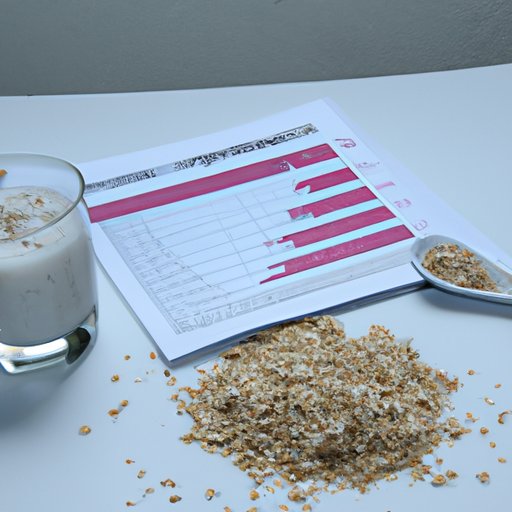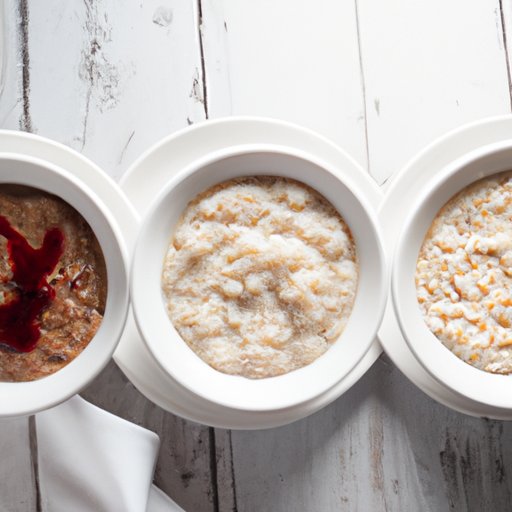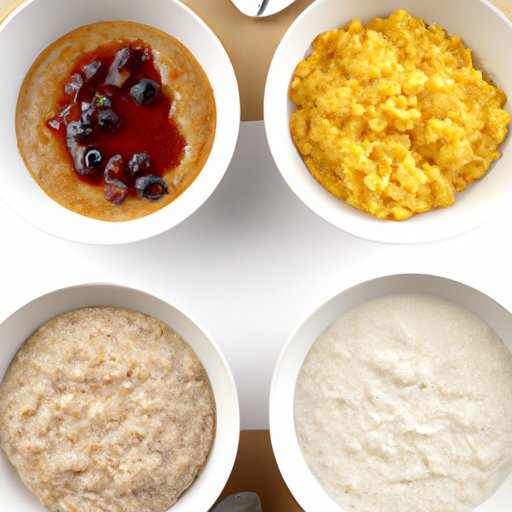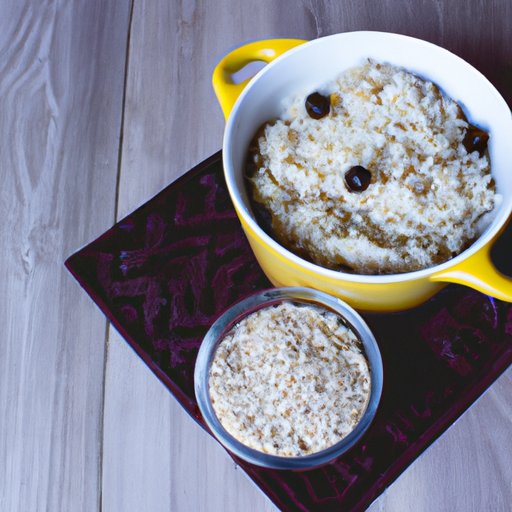Introduction
Porridge is a traditional breakfast food that has been enjoyed for centuries all over the world. It is made by boiling grains such as oats, rice, barley, or millet in water or milk. While the exact ingredients can vary from region to region, porridge is generally considered to be a nutritious and filling meal. But is porridge really healthy? In this article we will explore the nutritional benefits and risks of eating porridge and compare it to other popular breakfast foods.

Analyzing the Nutritional Benefits of Porridge
When it comes to nutrition, porridge is a great choice. It contains a variety of vitamins and minerals, including calcium, magnesium, phosphorus, zinc, folate, thiamin, riboflavin, vitamin B6, and vitamin E. Porridge is also a good source of macronutrients, providing carbohydrates, protein, and fats.
In addition to its macro and micronutrient content, porridge has several other nutritional benefits. For example, it is high in fiber, which helps to keep you feeling full longer and aids in digestion. Additionally, porridge is naturally low in sugar and sodium, making it a healthier choice than many processed breakfast cereals.
Examining Porridge’s Role in a Healthy Diet
Porridge can be a great addition to a healthy diet for a variety of reasons. First, it is low in calories, so it can help with weight loss when eaten in moderation. Additionally, porridge has been shown to reduce cholesterol levels and regulate blood sugar levels, making it a great choice for those with diabetes or heart disease.
Finally, porridge is incredibly versatile. It can be sweetened with honey or fruit, or spiced up with cinnamon or nutmeg. Plus, different types of grains can be used to create a variety of flavors and textures.

Exploring the Different Varieties of Porridge
As mentioned above, porridge can be made with a variety of grains. Here is a brief overview of the most popular types:
Oats
Oats are one of the most popular grains used to make porridge. They are packed with nutrients and have a mild, nutty flavor. Oats are also high in soluble fiber, which can help to lower cholesterol.
Rice
Rice is another popular grain for making porridge. It has a mild flavor and is high in complex carbohydrates. Rice is also gluten-free, making it a great option for those with celiac disease or gluten sensitivities.
Barley
Barley is a hearty grain with a nutty flavor. It is high in fiber and contains several important vitamins and minerals. Barley porridge is often served with honey, cinnamon, and other spices.
Millet
Millet is a small, round grain that is high in protein and fiber. It has a slightly sweet taste and can be cooked into a creamy porridge. Millet is also gluten-free, making it a great option for those avoiding wheat.
Investigating the Health Risks Associated with Porridge Consumption
While porridge is generally considered to be a healthy food, there are some potential risks associated with consumption. First, porridge is high in calories, so it should be eaten in moderation. Additionally, porridge is often low in fiber, so adding additional sources of fiber (such as nuts, seeds, or fruits) can help to boost its nutritional content. Finally, some people may experience allergic reactions to certain grains, so it is important to be aware of any food sensitivities before eating porridge.

Comparing Porridge to Other Popular Breakfast Foods
When it comes to breakfast foods, there are many options to choose from. Here is a brief comparison between porridge and three other popular choices:
Cereal
Cereal is a convenient, portable option for breakfast. However, many cereals are high in sugar and lack essential nutrients. Porridge, on the other hand, is nutrient-dense and low in sugar.
Toast
Toast is a simple, quick breakfast option. While it is high in carbohydrates, it is low in protein and fiber. Porridge, on the other hand, is higher in both protein and fiber, making it a more balanced option.
Fruit
Fruit is a great source of vitamins and minerals. However, it is low in protein and fiber, so it is best eaten in combination with other foods. Porridge, on the other hand, is an excellent source of both protein and fiber, making it a more complete meal.
Conclusion
In conclusion, porridge is a healthy breakfast option that can provide numerous nutritional benefits. It is high in vitamins and minerals, low in sodium, and full of fiber and protein. Additionally, different varieties of porridge can be made to suit individual tastes and dietary needs. While there are some potential risks associated with porridge consumption, these can be minimized by eating in moderation and adding additional sources of fiber. When compared to other popular breakfast foods, porridge is a much more balanced and nutritious option.
Overall, porridge is an excellent choice for a healthy breakfast. It is easy to make, versatile, and packed with essential nutrients. So if you’re looking for a nutritious start to your day, consider giving porridge a try!
(Note: Is this article not meeting your expectations? Do you have knowledge or insights to share? Unlock new opportunities and expand your reach by joining our authors team. Click Registration to join us and share your expertise with our readers.)
